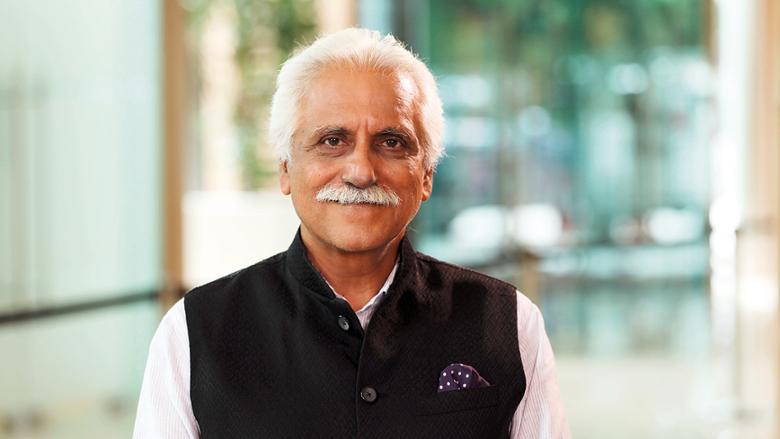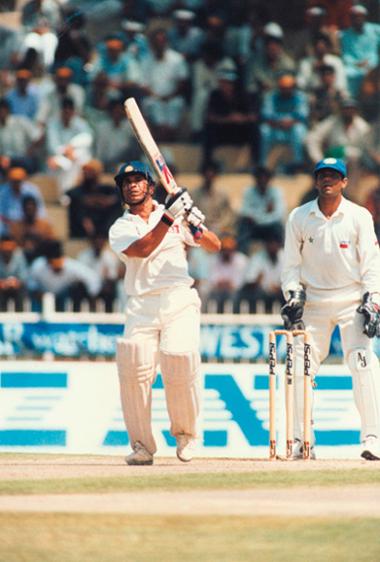From Kapil Dev to Virat Kohli, Ayaz Memon’s ‘Indian Innings’ chronicles Indian cricket’s journey
Among the things that unite Indians, cricket surely must rank pretty high. A new book, an anthology of articles written by some of the most acclaimed writers, attempts to chronicle the game since the birth of the country. Anand Raj OK speaks to its editor Ayaz Memon to find out how he put it together
It was July 11, 1949, and Narayan Masurekar was visiting his day-old nephew in a hospital in Mumbai, India. However, something about the appearance of the baby in the crib made Narayan furrow his brow. He was sure he had noticed a minor blemish on the infant’s earlobe when he had seen the little one the previous day. Today, though, the blemish was missing on the baby. Narayan examined the kid more closely before stepping back. He was sure. "This is not my nephew!" he declared.
The shocked family members quickly launched a search leaving the entire hospital in a tizzy; every male infant in the hospital was examined for a blemish on the ear.
Finally, the missing kid was found – fast asleep beside a fisherwoman who had also delivered a baby boy in the hospital at around the same time the little hero of this anecdote was born.
"The babies were swapped and history was made," writes noted author and Indian parliamentarian Shashi Tharoor. "The child who, had the mistake not been detected, might have revolutionised Indian fishing, grew up to haul in a different kind of catch (108 of them)." But of course, he would be better known for his batting prowess than for his agility as a fielder.
Honing his skills in a cricket-loving family in Mumbai "instead of a seafarer’s shack far from the maidans", that boy would grow up to become one of the greatest cricketers the world had seen: Sunil Manohar Gavaskar.
Shashi Tharoor describes this interesting incident that occurred in the former Indian cricket captain’s early life in a fascinating profile of the original Little Master in Indian Innings: The Journey of Indian Cricket From 1947 (Westland, 2021). Shashi’s is but one of more than 80 exciting and insightful features and reports that figure in the anthology that runs into more than 400 pages, sure to be a cricket lover’s dream catch.
Edited by Ayaz Memon, a respected name in cricket writing, the book has pieces by some fine wordsmiths including Dicky Rutnagar, Ramachandra Guha, Rajdeep Sardesai, Anil Dharker, Kadambari Murali, Sharda Ugra and Suresh Menon (yes, the last is the same gentleman who pens the satirical column in Friday magazine every week), on the second most popular sport in the world.
A lawyer by qualification and journalist by choice, Ayaz, who has covered over 300 Test matches and more than 400 One-Day Internationals across the globe, is perhaps just the man to put together this anthology. A former editor of Indian newspapers including Mid-Day and DNA, he has also been an editor at Sportsweek, once a hugely popular sports publications in India, The Times of India and The Independent.
"When I began working on this book, my plan was to include articles about Indian cricket and cricketers, that were written by Indian journalists and which were published in Indian media," says Ayaz, in a video interview from his home in Mumbai, India. The idea was that such parameters would help him narrow down the field and focus on choosing pieces from "the vast ocean of cricket writing".
However, once he got into the middle, the 66-year-old realised that if he stuck to his original brief, he would have to drop several "excellent pieces" written by those who were not Indians in the technical sense of the term. "So I decided to tweak my brief and included works by authors such as Mihir Bose and Tunku Varadarajan who may not be Indian citizens but are people of Indian origin," he says, with a laugh.
The book scores better thanks to this tweak. Mihir, for instance, in a short piece offers an interesting insight into the role Vijay Merchant, one of the selectors in the 70s, played in replacing Tiger Pataudi with Ajit Wadekar as captain of the Indian team at the time, a move that rankled many lovers of the sport and would be debated for years.
Tunku, in a succinct piece, explores whether Virat Kohli is "a man of adamant ambition" and if he is indeed India’s finest.
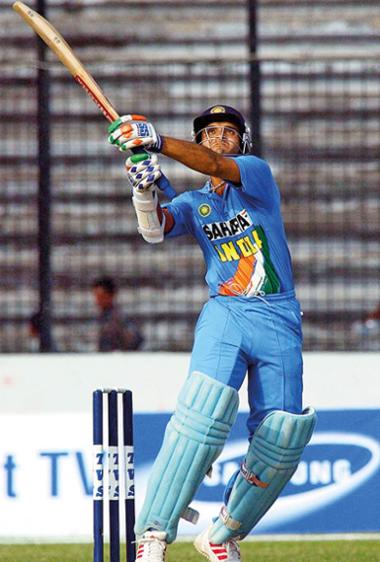
Ayaz also decided not to play himself into a corner by restricting himself to using only pieces that were published in Indian media. Thus is included an engrossing piece by David McMohan – an interview with Sachin Tendulkar in 1992 that appeared in an Australian newspaper. "It was a lovely interview at a time when Tendulkar was becoming a big star and I felt it would be a shame not to include it," says the editor.
Ayaz also decided to make an exception to one the guidelines he had set for himself and include an unpublished piece "because it was too good to be ignored". The article in question was by noted cricket writer and commentator Harsha Bhogle. "Harsha misunderstood the brief I gave him and sent me an original piece he penned on Indo-Pak cricket. It is a wonderful article and the only one in the book that has not been published before," says the sport lover, one of the few people to have watched live Kapil Dev’s historic 175 (no) in the India vs Zimbabwe in the 1983 Cricket World Cup.
Not unlike some test matches, Ayaz’s book starts off a tad leisurely, opening with a piece by Raju Mukherjee on one of Indian cricket’s greats, Vijay Hazare who "strode like a colossus" during the early 1900s. Among matches discussed is the one played in England where two Vijays – Hazare and Manjrekar – put on 222 out of a total of 293, driving and cutting a fiery Freddie Trueman and a wily Jim Laker. Although a brilliant batsman, Vijay Hazare did not prove to be captain material, writes Raju, and by giving him the captain’s cap, India in effect lost a good batsman.
"Hazare was not the last to be sacrificed thus… When will we learn that captaincy and batting are two different distinct disciplines?" the writer asks. It’s surely a question cricket lovers have debated- and perhaps will continue to debate- at several junctures of the game’s history.
While Indian Innings does not have a lot of pieces on the early years of the game in India – "there aren’t a lot of published, bylined reports available between ’47 and late 60s", explains Ayaz – the book gathers pace when chronicling the sport from the early 70s.
KN Prabhu opens the section with a piece, ‘India’s Finest Hour’, recapping how the visitors beat England in 1971 at the Oval under a brand new captain Ajit Wadekar.
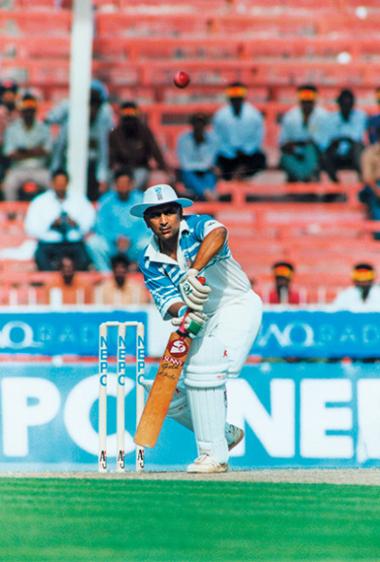
A report on India’s Prudential Cup victory, profiles on Kapil Dev and Sourav Ganguly (both by R Mohan), an analysis of VVS Laxman’s batting style (by Prem Panicker), an exciting piece on Anil Kumble’s perfect-10 haul (by Vijay Lokapally), Boria Majumdar’s report of a day at Lord’s for the 2000th Test, Kadambari’s and Tariq Engineer’s article on Virender Sehwag’s batting prowess, Anirudha Bahal’s take on deception off the field… all help remind cricket lovers of some of the glorious – and a few inglorious – moments of the sport.
Putting together an anthology of this size was clearly no easy task. The author of two books on cricket, Ayaz recalls spending days and weeks in the archives of several major newspapers in India looking up cricket features, scouring websites for contact details of authors to seek permissions to use content, and visiting libraries of media houses in search of material. Then the pandemic came along almost clean-bowling his project.
"For a time, we considered shelving the project," he says. "But in some ways the forced stay-at-home rules during the pandemic did help. I used that time to research online and get in touch with writers regarding their articles."
He admits that "there will be some glaring omissions of writers". And the reasons for that range from failing to get permission to use features to budget constraints, he says.
Looking back, is there something he wishes he could have included in the book?
"A few pieces from regional languages," says Ayaz. "There are very good bi-lingual speakers and writers in Marathi, Bengali... But I could not due to circumstances beyond my control."
And which are his pick of the articles?
"That’s a tough one," he says with a laugh. "There are many, but right on top of my head I can think of Sashi Tharoor’s, then Suresh Menon’s piece on BS Chandrashekar, Sharda Ugra on new talents, Mukul Kesavan on the last win India had in Australia."
He also lists Sunil Gavaskar’s writing on the limited over wins of the 1990s, Ajit Wadekar on Maharashtra cricketers, Balwinder Singh Sandhu’s profile of Kapil Dev. "That last one is interesting in that it is not about Kapil’s skills but about Kapil as a man and a captain."
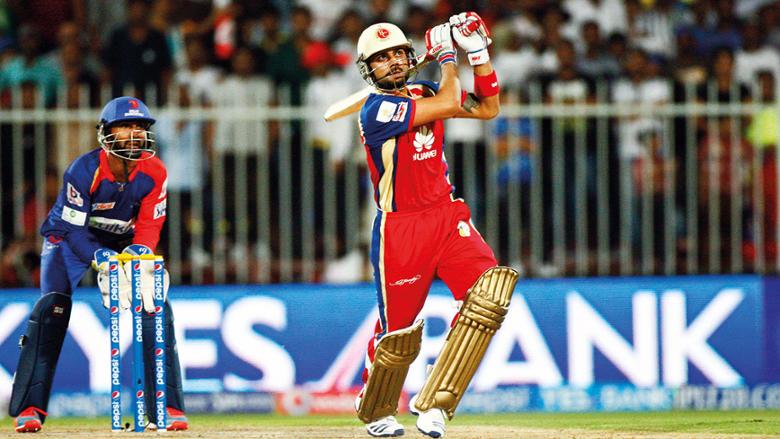
I point out a shortcoming of the book – that there are not many pieces by and on Indian women cricketers.
"That’s true," he admits quickly. "There are a few pieces including one on Mithali Raj, I wish I had included more."
Is there one cricketer who remained in his mind long after he wrapped up the book?
"Yes," he says, "Vinoo Mankad." Part of the first team of independent India that toured Australia, Vinoo made a 100 against Bradman’s team and was a key figure in the first match that India won in 1951-52. He put up a world record partnership with Pankaj Roy against New Zealand in 1955, was the central figure when India beat Pakistan in the inaugural series, and played a key role at Lord’s making 194 and taking 4 wickets. "I often think that had Vinoo been an Englishman, there would have been perhaps 50 books on him."
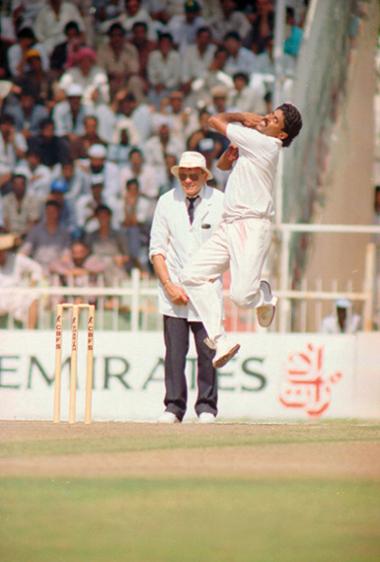
I point out that Mankad has a cricket term attributed to him. "True, but at that time it was seen as an offence when all he did was play by the rules. Only recently has the views on the issue changed since R Ashwin did a Mankad and also spoke up about it stirring a major debate."
As we come to the end of the interview, I ask if Indian cricket writing has changed over the years.
"Oh, yes," he says. "From basic match reports to prose rich in rhetoric, to pieces that are more analytical, cricket writing has evolved quite a bit."
Thanks to live TV coverage, plain reportage has become redundant. Now data-backed articles are what readers look for, he says, and such reports are much appreciated.
